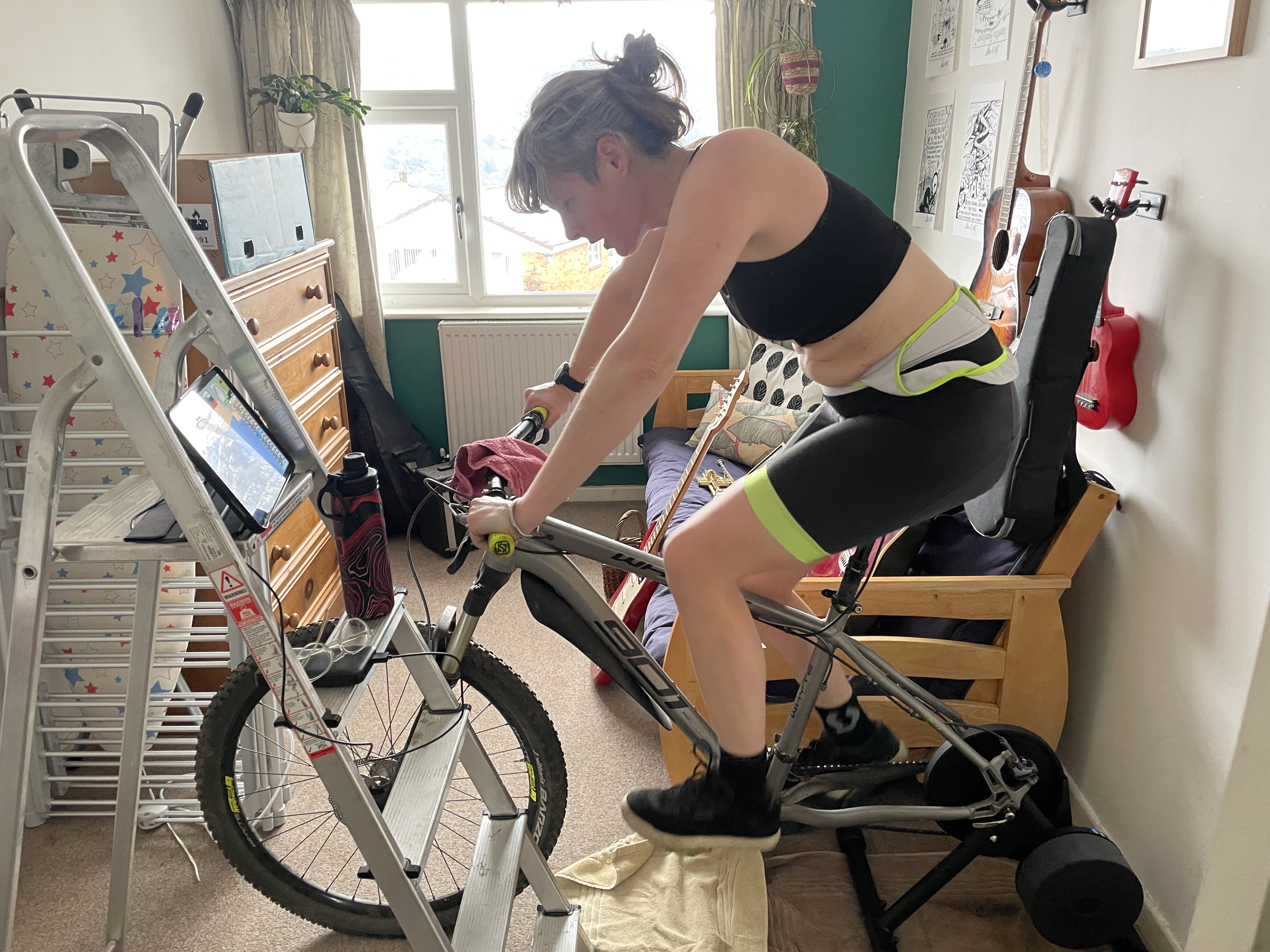Lessons learnt. Myths and truths. The good, the bad, and the ugly. They’ll prove useful if you’re contemplating starting indoor training – you may also have a laugh at my expense.
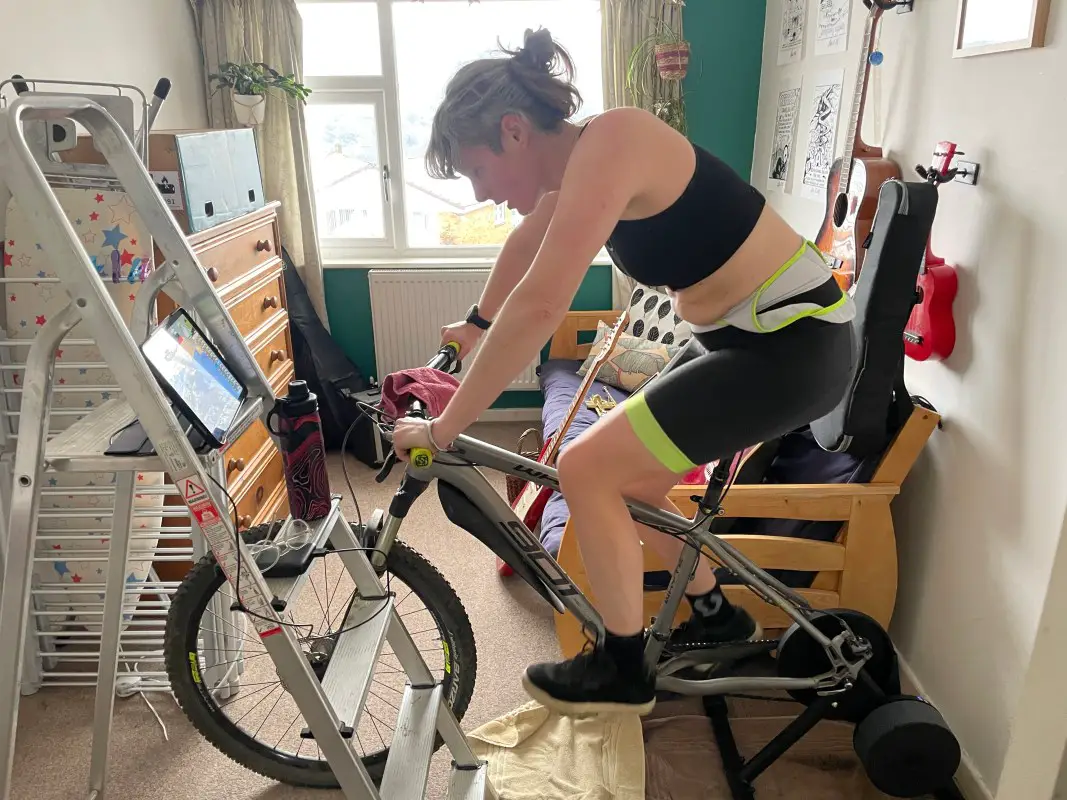
A quick back-story
Last winter I managed to get four different bouts of flu-like things, each of which consigned me to bed for a number of days, then counted me out of any serious aerobic efforts for a week of more afterwards. No sooner had I got back to exercise than another bug would pack me off to bed. I emerged from winter dispirited and unfit, and felt like I was playing (literal) catch up on every ride for the rest of the year. In the hope of turning the fitness decline around, I took delivery of a Wahoo Kickr Core (about £450 SRP) with Zwift Cog and Zwift membership in November. I’m not done testing yet, so this is not a review. That will come later.
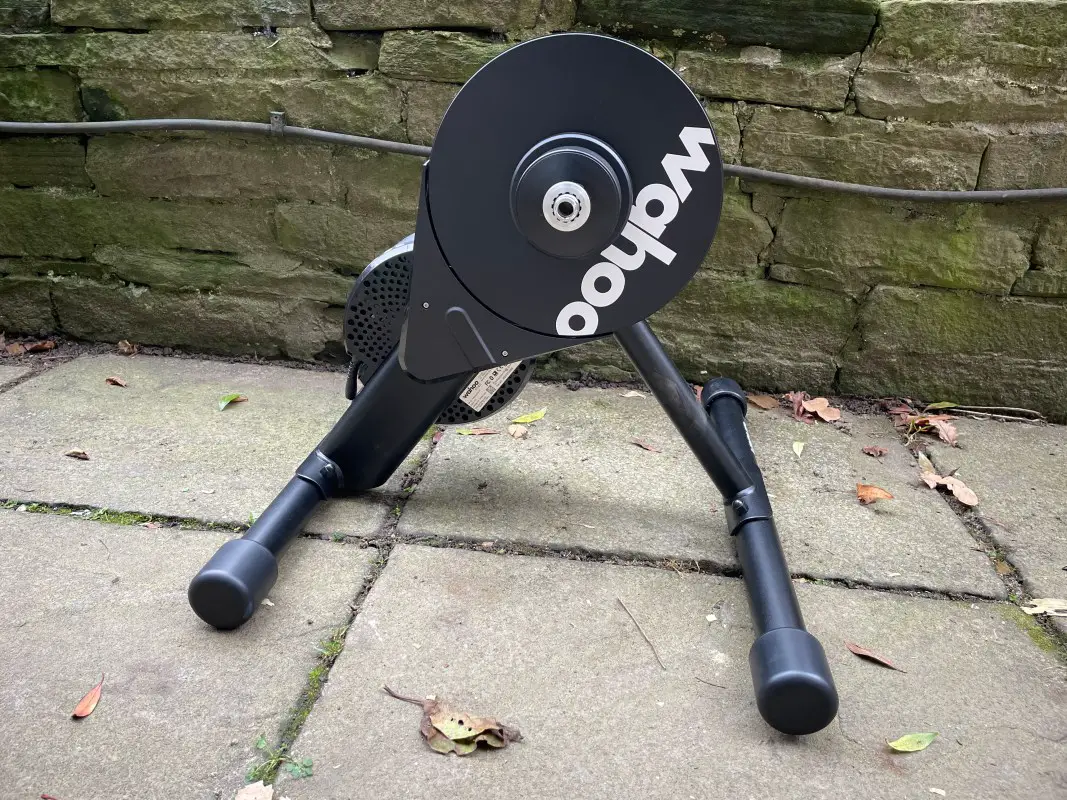
1. If you are tired and busy, you are still tired and busy
Having an indoor trainer set up at home won’t make you any less tired or busy. After an initial flurry of activity, illness and home repairs saw me leave the trainer unridden over Christmas. But, if you can manage to spend a spare half hour working up a sweat, it’s a lot easier to do so than heading outside. Spare hours though… it is entirely possible to feel just as dispirited in the virtual world as the real one by how much spare time and energy (and commitment, and discipline) everyone else seems to have compared to you.
2. It’s good for squeezing in an intense work out
If you have 30-45 minutes to spare you can hop on the bike and brutalise yourself. Allow more time if you want a warm up or a cool down. Factor in time for a shower. Once you’ve figured out your set up, it’s a fairly quick process to get going – much easier than finding time to head out for a ride, or to a gym etc.
3. You’ll want a spare 90 minutes for more variety
I’ve found that most of the races take about an hour, as do many of the group rides. It’s much more motivating (for me, anyway) to have something to ‘complete’ than it is to think ‘I’ll pedal around Watopia for 45 minutes’, and the races and events have a slight social element to them (if you want to chat, or just read the comments). Completing something gives a focus – and a distraction. By the time you factor in getting onto the bike, doing the ride, cooling down, and having a shower, you need about 90 minutes if you want more choice of interactive activities. There’s a reasonable selection of shorter workouts, but they seem to be at either end of the ‘turn yourself inside out’ to ‘gentle entry level ride’ spectrum, and they’re more of a solo affair.
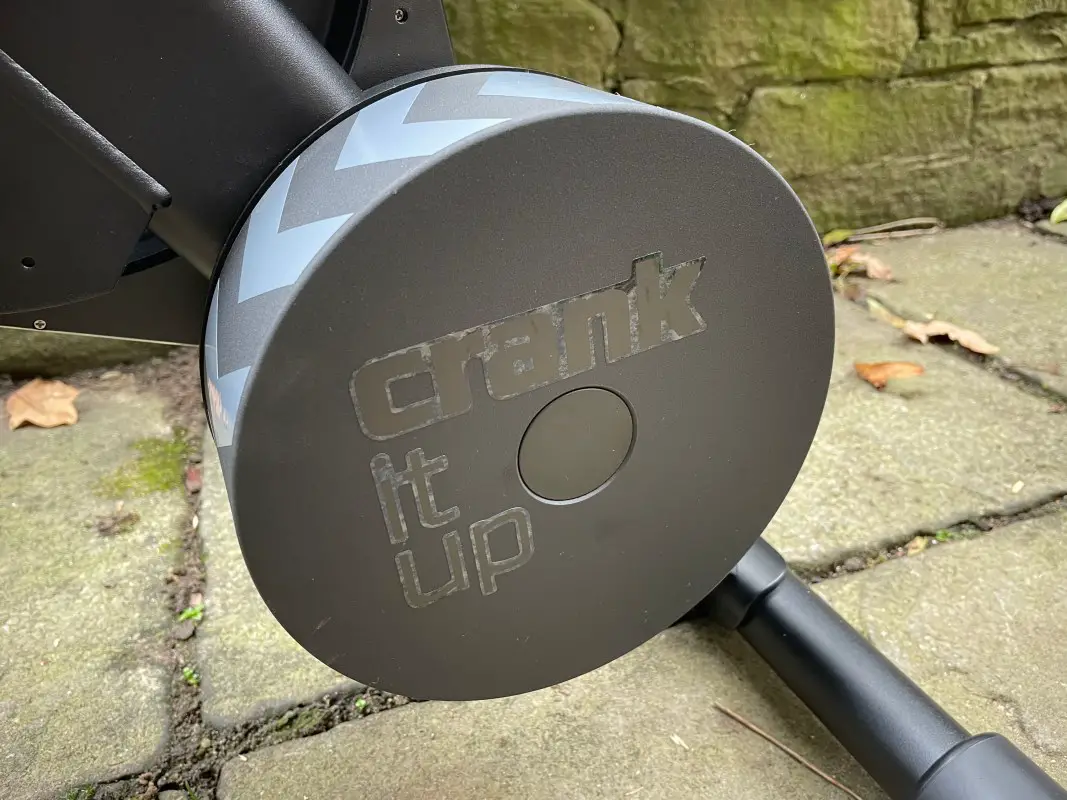
4. You can work harder than you ever could outside
You don’t have to worry about steering, or falling off, or being hit by a car, or any of that outdoor stuff. All you have to do is pedal. If you overdo it, you’re not stuck on a hill miles from home. You can push as hard as you like, and all you have to do afterwards is crawl up the stairs for a shower. You can even lie on the kitchen floor for a moment if crawling upstairs feels like too much. But then you’ll have to mop the kitchen floor later.
5. You can give up whenever you want
As above, if you’ve been ill, or you’re a bit tired, or you’re not sure if you’ve got the legs, you can just climb on and see what happens. I’ve ridden home from work, thought I had a bit more in my legs and got on Zwift, felt a bit bonky, and stopped. Nothing lost. No dreadful long walk home, or emergency garage food. You don’t even need to get home from the gym. Just get off and head for the kitchen (or shower). In this respect, the indoor trainer is excellent for recovering fitness, or getting it in the first place.

6. You will need a shower
I’ve mentioned the shower a few times now, haven’t I? You’re going to need a shower, immediately. You will be sweaty and dripping, no matter how cold the room is, or how many fans you add. Don’t think you can squeeze in a lunch ride and slip straight back to your desk. You will need a shower. You will need to wash any clothes you are wearing, possibly placing them immediately into the washing machine.
7. Bring towels
You will need a towel on the floor to catch the drips of sweat as you pedal, and anything that gets flung off your chain. A facecloth is handy for wiping down your face, chest and arms as you pedal, and drying out your grips and hands so you can hold on to the bars.
8. Bring water
You will need water. Make sure it’s easy to get to and easy to drink without pausing. No tight valves or tricksy tops. Whether you’re racing or just trying to keep to a certain power output, particularly in short workouts, losing concentration for a moment can be hard to recover from.
9. Don’t bring clothes
Even in a cold room, or with a fan, you are going to get hot AF. You might wear a top for the first few minutes of a warm-up, but expect to remove it pretty early on. Shorts, socks and a sports bra is enough clothing. Which may affect your choices of where you want to set up your trainer. If your teenage kids are likely to bring their friends home, you may not want to be on public view.
10. Don’t bring spectacles
Expect to sweat so much that your glasses fall off. But, you will want to be able to see, especially if racing. You particularly need to be able to read power outputs, so if you need contacts to do that, put them in. Or, take the risk that yo’ll need to sling your glasses to somewhere safe during a final sprint effort.
11. Don’t use your phone
If you use your phone to train on Zwift, you’re going to be pedalling away while all your usual notifications and texts come in. This is distracting, and annoying because you can’t do picture in picture to check what that text was about. Having Zwift running on another device is much better, with the Zwift Companion App on your phone perhaps.
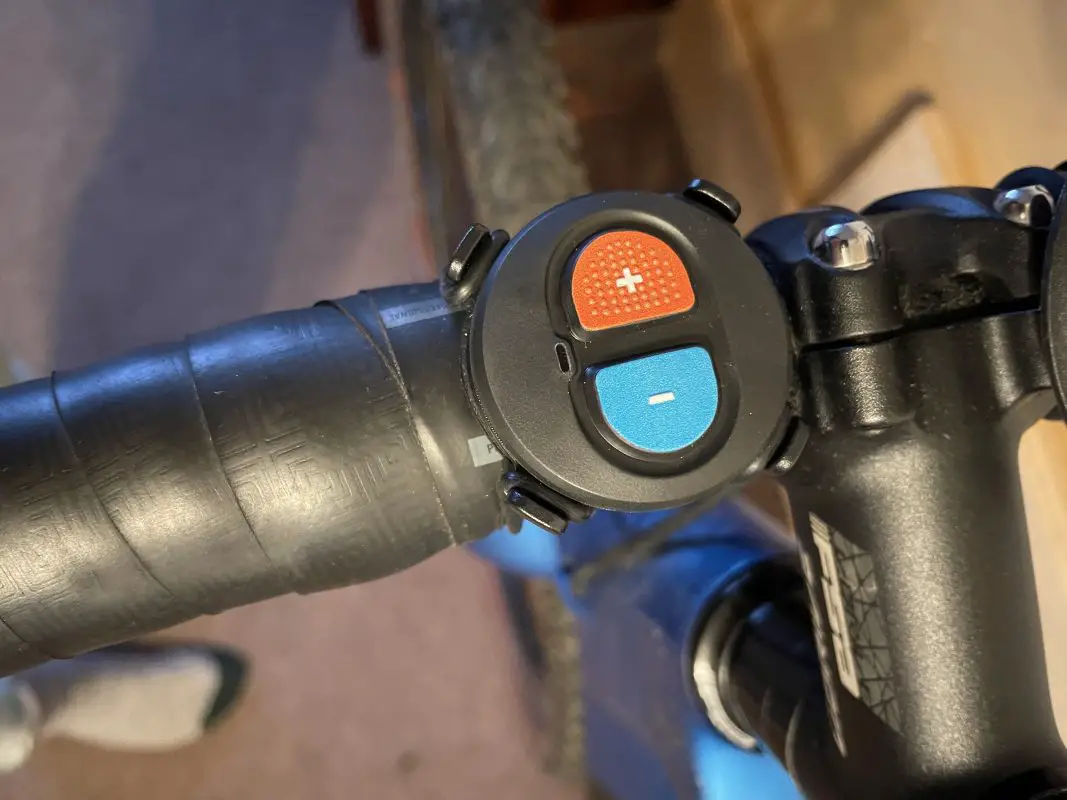
12. You will be obsessed about fit and zone set up
Balancing access to your water, screen, face cloth and phone – and perhaps somewhere to carefully sling your glasses if you work up too much of a sweat – will become an obsession. You will almost certainly want a fan. Getting exactly the right saddle and saddle position will become a preoccupation. You will curse yourself for not washing your preferred chamois shorts in time for your next workout. You will think that, actually, a bespoke stand or mount for your screen would not be excessive. Or perhaps a small house extension so that you could have everything laid out just as you want it.

13. If your bike has annoying rattles, these will be worse
Perhaps you will think ‘I’ve an old bike I don’t ride, I could put that on the trainer’. Pah! If that old bike has the perfect geometry and saddle that means you’re comfortable sitting on it, then maybe it’ll work. But if its drivetrain is a little tired, you’re going to be driven crazy by the clicks and clunks of tired jockey wheels, or bent derailleurs. The drivetrain is the source of any noise, and some janky old set up is unlikely to have the silky quiet burr of a new drivetrain. Are you really going to buy that old bike a new mech and chain (and saddle, and grips, and bottom bracket…)?
14. Your bike is not clean enough
No matter how much you think you’ve cleaned your bike, the moment you bring it indoors you will discover how filthy it really is. Be sure to place a towel or old rug on the floor to protect it from the inevitable crumbs of dirt and oil that will be displaced as you train.
15. Flex feels wrong
You’re going to want to lock out any suspension. If you have flex or movement it feels all wrong when you try to stand up to pedal, so you’ll end up sitting the entire time – which is possible, but your undercarriage will hate you. Note that some modern carbon frames have flex stays or built in frame flex that you can’t lock out. In my experience, it’s OK, but it feels… odd, like your saddle is bending.
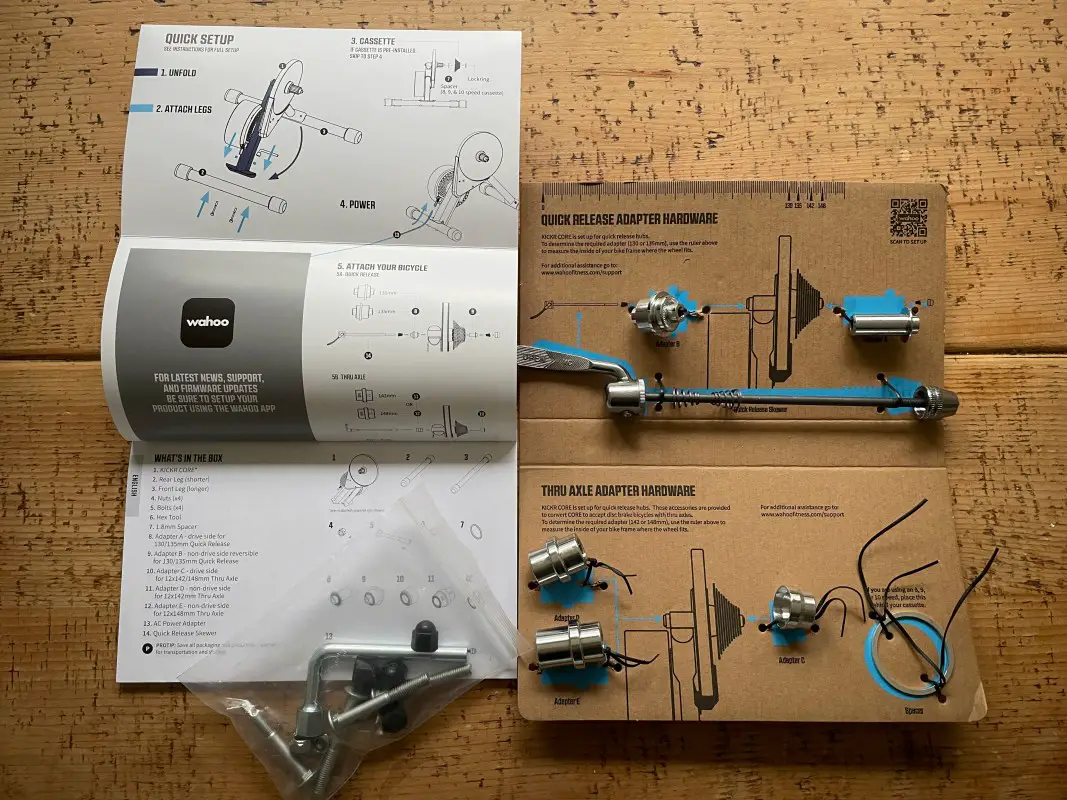
16. Set up is easy, sort of
The Zwift Cog plus the Wahoo Kickr Core adapters does make fitting a bike to the trainer relatively easy (once you’ve cleaned your bike). The lack of faffing around with compatible cassettes is great, and if you’ve a couple of people in the house who want to swap bikes onto the trainer that is feasible. The smoother running the bike, the better. Realistically, I don’t think you’re going to be whipping your mountain bike off the trainer to go for a ride at the weekend and putting it back on the trainer for midweek – not unless you’re really keen on cleaning your bike. Putting a bike on the trainer for a winter season would be more practical, or putting something older but well maintained on as a near permanent fixture. Check compatibility with your frame – amusingly I happened to have a selection of niche bikes that didn’t play with the Kickr Core.
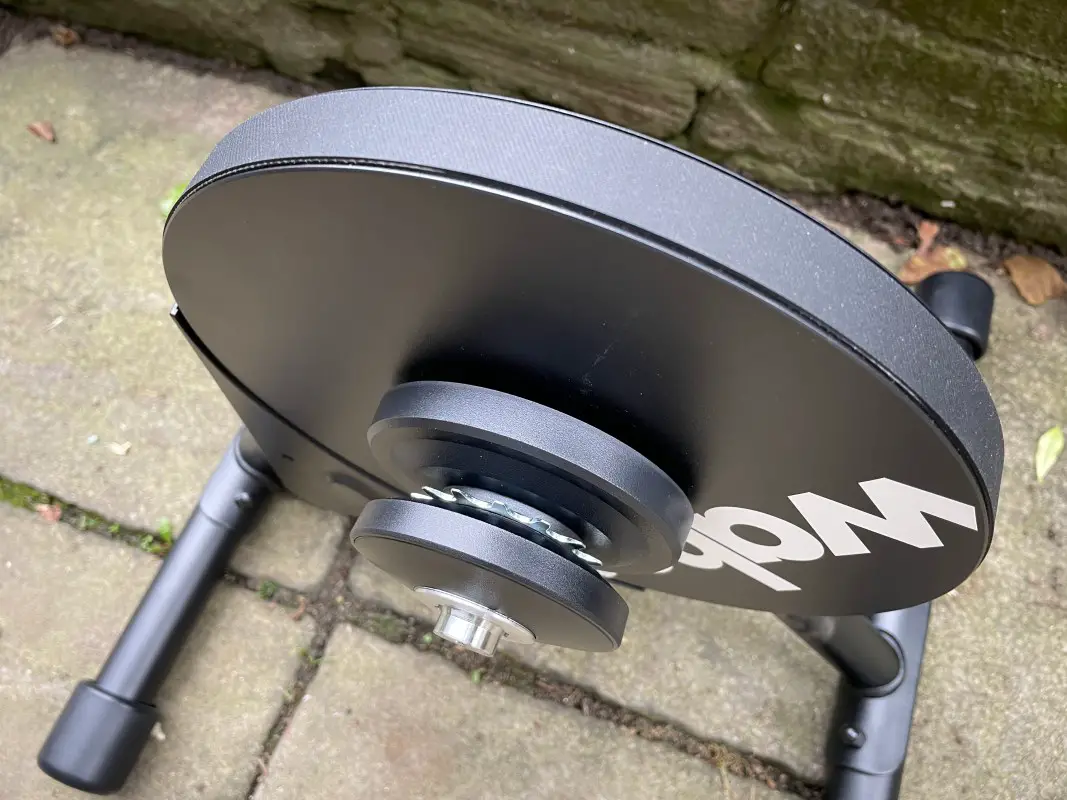
17. There is no waiting for faffers
Group rides, races and events start at start times. Be ready. If you are even 5 seconds late to clip in and start pedalling, you may as well be riding alone. You will be killing yourself to catch up, and by the time you’ve closed the gap you’ll be so in the red you won’t have anything left for later, when you were meant to be in the red. Don’t be late. No one waits for you.
18. Zwift/Real Life balance can be a problem
Despite my lull in activities, I have found Zwift to be kind of compelling, in much the same way as social media and computer games can be. I have found that I have tired myself out so much doing a Zwift race that it’s limited my real-world cycling abilities the next day. So instead of risking finding myself exhausted on some remote hillside, I’ve done another half hour intervals session, and then wrecked myself for the next day. Conversely, I’ve found myself being annoyed after a bike commute to work and back that I’m now too tired to do the race I wanted to do on Zwift. I’ve yet to figure out how to get the Zwift/real life balance quite right, but I have noticed my legs feeling much stronger out on the hills even after just a couple of weeks of Zwifting.
19. There’s a lot of signing in and up
To get going, put your best tech-tolerance head on. For my set-up, you’re going to need to set up the KickrCore with the Wahoo app, and the Zwift App, and sign in to the Zwift Companion App. If you want to race, you’ll also need to join the ZwiftPower website. And, somewhat annoyingly, a Zwift subscription only works for one person. If your partner wants to ride with any regularity, they’ll need their own subscription – there’s no family or household option like with Netflix, Spotify etc.

20. You can still be lazy and make excuses
It is entirely possibly to make excuses about how you are too tired and busy to get on the trainer. But once set up, the absence of any commute to a gym, drive to a trailhead, need to charge lights, or other reasons not to go outside – it does all add up to making it a lot easier to get on the bike and do some exercise. And this is definitely exercise – you’re not getting a nature kick of nice views and owl encounters. But I suspect there is something in the brutal intensity that you can put yourself through – without fear of falling off or needing a taxi home – that does something to your body, or its chemistry. It’s surprising to me just how hard my body will work, when I push it. It’s even more surprising to me that once the urge to throw up has worn off, there’s definitely an afterglow of some sort. Kind of tingly. Kind of sleepy. Kind of energised. I’m not quite sure how to describe it, but I guess I’ll keep chasing it and hope that eventually some part of my brain will find that sensation more appealing than another box set and a packet of crisps. Watch this space.
